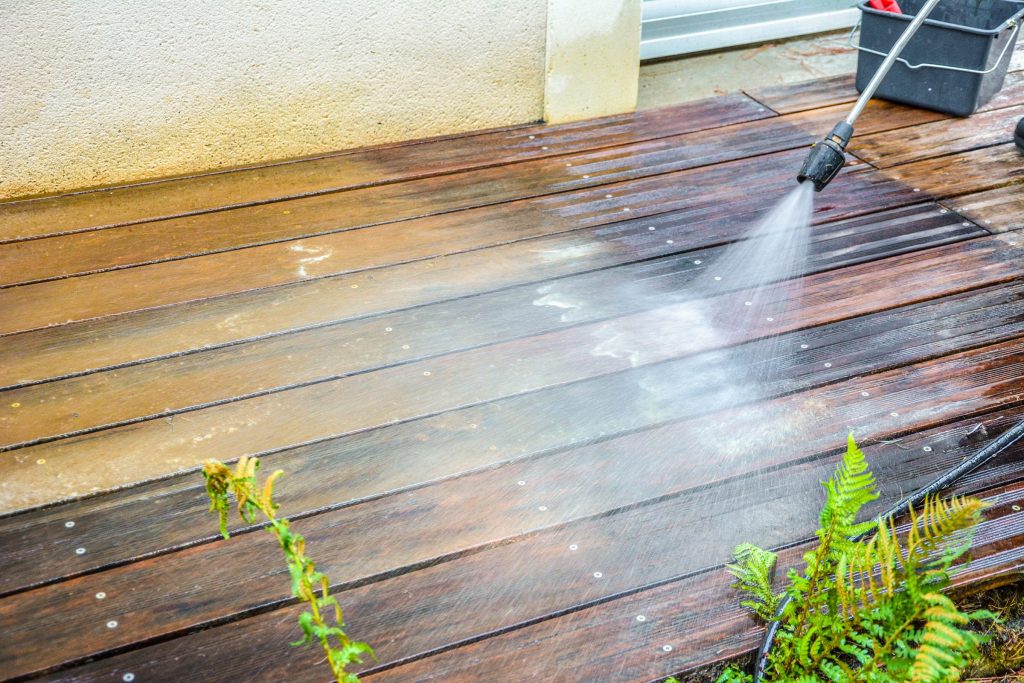The age-old subject is passionately debated for hours on end: Ribbed Decking Ridges On Boards Myth
What is the best method for installing ribbed decking?
Manufacturers or industry experts of decking composite boards will inform you that:
“Ridge side down is the recommended installation method for ribbed decking boards.”
The ridges are intended to promote ventilation, prevent moisture from condensing in the ridge, and enable a more robust construction. Due to improved moisture drainage and the ability for it to air dry, this results in a less slippery deck.

On a ribbed decking board, what do the ridges serve?
Ribbed decking wood features ridges, often known as “grooves” or “reeds,” that run the length of the board. If the ridges are put incorrectly, they will face up since people will think it looks nice and serves a purpose. Many choose to ask the contractors to put the timber boards face up since the reeded side creates intriguing patterns that seem slick and attractive. The manufacturer-recommended orientation for installation is for them to be placed facing down.
Why do people install decking backward?
You would be mistaken if you assumed that was the only reason folks installed their ribbed decking the wrong way up. People also position the groove side of the ribbed decking composite boards up because they believe the ridges aid boost grip and reduce slipperiness. This is just incorrect since wood is always slick.
Some individuals also extol the therapeutic virtues of the ridges on the feet, but you may get the same result simply massaging your feet with a massage ball or stick. A walk in the forest will be a far more organic approach to experiencing wood under your feet.

The reality of proper ribbed decking groove laying
So, contrary to what many people think, the ridges on your deck are not designed to prevent you from slipping and sliding. They’re also not meant to improve the appearance of your deck. Actually, they serve as a structural component to increase the longevity of the object.
With the ridges pointing up, the boards have a tendency to gather moisture between the grooves, which can lead to serious consequences when mold begins to grow or when the wood begins to decay. Although a ribbed decking board with the flat side up may appear to be slippery, there is a way to avoid slipping. räfflad trall strips made of GripClad GRP should be installed. Even while some individuals may extol the virtues of chicken wire and grit coatings, we have repeatedly found that they are ineffective.
The quick fixes people usually try to avoid slipping
We have observed several techniques being utilized to increase the traction of decks, however, these techniques are sometimes quite ineffective and expensive to update on a regular basis. Some strategies that don’t work are:
- Anti-slip coatings and grit. They need to be cured since they don’t endure long enough.
- non-slip tape. This won’t hold up outside and probably does more harm than good.
- poultry wire If it’s unsecured, it will slash people’s feet and make the trip.
- a rubber mat. If not fastened, they move around and collect dirt.
-
Grit-filled anti-slip coatings
The coating must be thick enough to keep the grit or otherwise, it will quickly deteriorate and lose its slip-resistant properties. Additionally, it isn’t the prettiest looking and frequently completely covers the ribbed decking, obscuring its appearance. There have been several attempts to prevent slippage by utilizing a sand and paint mixture.
Any coating and grit approach will need a priming layer that is thick enough to retain a size 16 grit granule, followed by a second coat that is sealed after a second 12-hour cure period. You must be careful not to apply it too liberally or you risk losing the gritty surface. The grit eventually wears off and tends to be expelled out after a few months. So it’s not a very trustworthy long-term fix.
-
Non-slip tape is not durable
Non-slip tape just isn’t made for external uses, so sticking it down there won’t last more than five minutes.
-
The means of cutting corners: chicken wire
Unbelievably, this is still the cheapest option that we observe being used. It’s just another worthless, “cutting-edge” technique that not only creates a trip hazard but also quickly falls apart, ready to slice and gash ankles. Chicken wire is actually the worst option; merely use it to contain the birds.
-
More dangerous than they are worth: Rubber Matts
They can become slippery when wet, and if they are not fastened down, the mats may even slip. Even unattractive old ribbed decking wrapped in conveyor belts has been observed; when such kompositbrädor are wet, it resembles an ice rink. Many of these shoddy and disgustingly tried solutions are not only short-lived, but they are also completely useless and exacerbate the slipping danger that you are seeking to eliminate. ribbed decking and timber demand specialized solutions that meet long-lasting health and safety standards.

How exactly can you prevent slipping on timber flooring?
What are the actual long-term solutions, then? It is, in fact, Anti-slip 4.0mm Sheets and ribbed decking Strips, to put it simply. Our cleats may be reduced to 145mm or less because most decking composite boards are provided in that size. The best options for ribbed decking board slip resistance have been shown to be composite anti-slip materials. On all walking surfaces, it is the long-term solution that is the most durable.


